California Wildfires Strengthen the Case for Clean Tech


In the past few days, the latest spate of California wildfires have consumed over 350,000 acres. Unfortunately, this news is become all too common. Six of the most destructive wildfires in California history have taken place in the three years, and destroyed over 850,000 acres, killing 123 people.
Heatwaves and droughts have also increased in intensity—including a temperature reading at Death Valley of a record-breaking 130 degrees Fahrenheit. Alongside all of this has been the threat of power blackouts. And these tragedies are unfolding alongside the devastating effects of the COVID-19 pandemic, during which the state has seen nearly 12,000 deaths.
Climate change and the California wildfires
California has always been a boom and bust state in terms of weather—droughts and wildfires are not uncommon. But the last few decades have seen an increase in intensity and a shortening of time between events. Climate change did not create droughts, heatwaves and wildfires, but much like an athlete on steroids, it has most certainly enhanced nature’s performance.
Further impacts of climate change on the state include sea level rise and coastal erosion; the loss of snowpack and thus water stress; and poor air quality associated with increased heat. Poor air quality leads to public health impacts like increased rates of asthma and heart disease. In addition, air quality tends to be worse in and around communities of color and low-income communities, creating additional problems with not just climate change, but also with pandemics like COVID-19. Latinos in California are getting sick with the virus at a rate three times higher than Anglos.
Importantly, California is doing more than any other state to try to mitigate the impacts of climate change. But the effects are already being felt so it must also take measures to adapt to the impacts and make itself more resilient—more able to bounce back—when those effects spike. The argument currently raging over whose fault the possible blackouts are right now miss the point.
A matter of resources
As California saw the first rolling blackout in 19 years this week and faces potentially more as the heatwave sticks around, some have been pointing fingers at the state’s uptick in renewable energy and powering off of gas and nuclear power over the past few years. But it’s not the fault of renewable energy technologies; in fact, solar is generating power at the hottest time of the day when people are cranking up their air conditioners. Rather, the state has not adequately integrated renewables into the power system.
Several things should be done to lower the risk of future California wildfires, including improving forest and land management and discouraging people from move in increasing numbers to fire-prone areas and fixing PG&E, the state’s largest investor-owned utility. Power lines provide an easy target for lightning strikes and increased demand for electricity in a heatwave impose additional stress on utilities. But the most effective, long-term solution must be for policy makers and the private sector to address resource adequacy: in particular, distributed generation, batteries and microgrids.
The California Public Utilities Commission issued an order earlier this year to boost the deployment of microgrids and batteries, which, when coupled with a previous requirement for utilities to create wildfire mitigation plans, should help. However, the order just laid the groundwork, the utilities still need to follow through with investments.
The time to plan for long-term resilience was yesterday
Distributed generation - on-site power generation as opposed to electricity that must be sent through transmission lines – can reduce the risk of future California wildfires. Microgrids also enable customers to build for resilience within their communities, offering opportunities to protect them from blackouts.
In other parts of the country, microgrids are often a lifeline. For example, in the aftermath of Hurricane Harvey in 2017, Texas grocery store chain HEB microgrid-powered supermarkets to help keep them open when the surrounding areas remained without power. Backing up solar power with battery storage is also a critical component to resilience in a changing climate.
The Golden State has continued to lead in addressing climate change. Once the latest round of California wildfires is out, and before the next ones begin, the state’s utilities have an obligation to seek comprehensive, long-term solutions for resilience. Giving customers better access to innovative energy solutions that improve their ability to bounce back and thrive must be part of it.
Image credit: Pixabay
Sabotage of Legal Immigration Further Burdens U.S. Companies
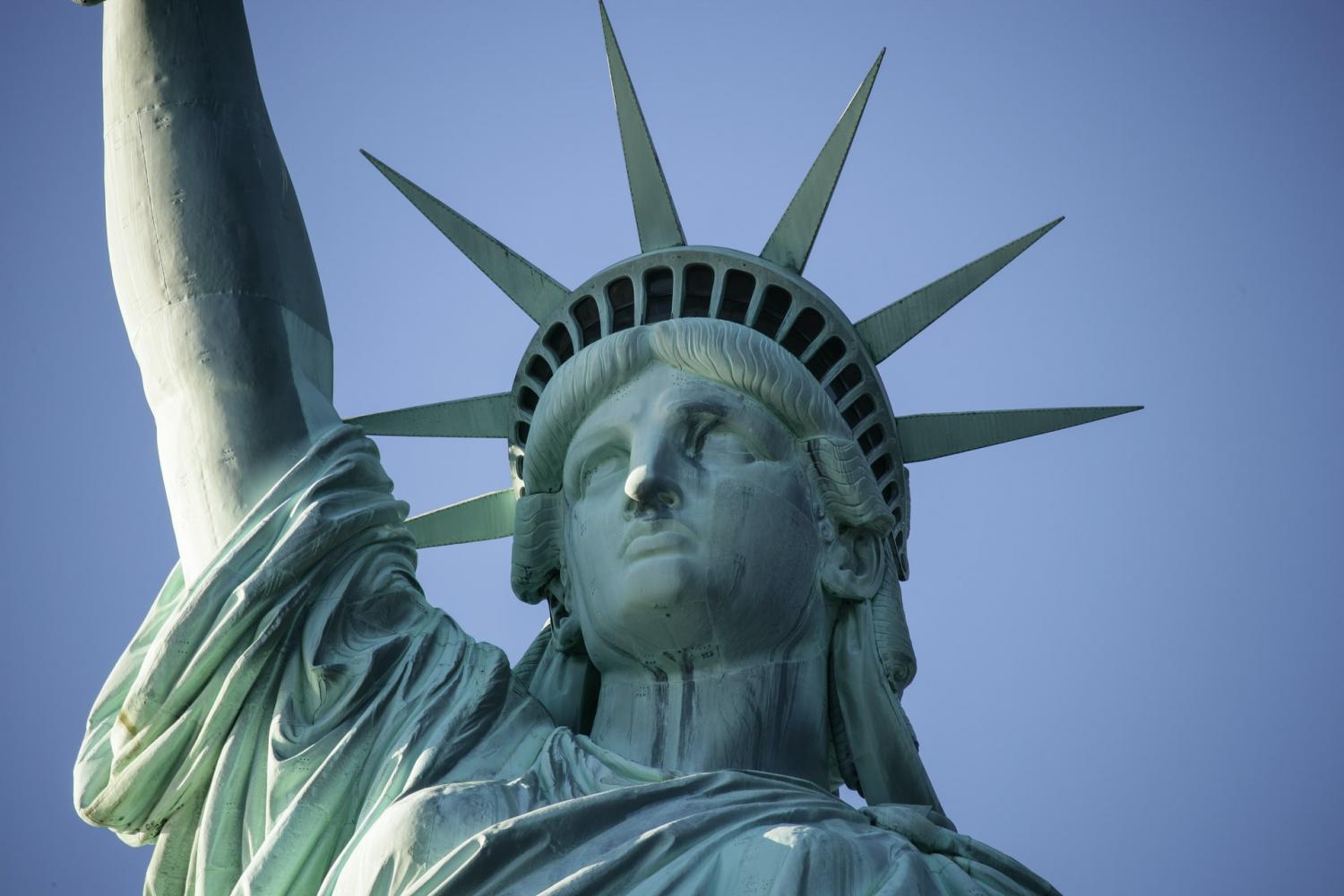

Without an influx of $1.2 billion in emergency appropriations from Congress, as many as 13,400 U.S. Citizenship and Immigration Services (USCIS) employees could be furloughed August 31, bringing the U.S. immigration system to a halt and leaving thousands of families without income.
The number of employees represents 70 percent of the federal workers who process legal immigrants into the U.S. The furloughs originally were scheduled for August 3, but the agency received some additional funding over the summer. Officials learned in July that USCIS had a surplus of approximately $121 million. The extra funds are needed for the 2021 fiscal year, which starts October 1.
“Not only would the furlough devastate USCIS and possibly irreparably harm foreign nationals and the businesses that rely on its services, but it would also harm local economies and create even more unemployment during the COVID-19 national crisis,” according to the National Law Review.
Adding to the anxiety and uncertainty is the fact that Congress is not in session.
“This isn’t only about the 13,400 American families about to be laid off during a pandemic –this is yet another thinly veiled attack on the legal immigration system by Trump administration officials like Stephen Miller,” Danielle Spooner, president of the American Federation of Government Employees Local 119, which includes USCIS workers, said in a prepared statement.
“Over the long-term, that's going to seriously damage our legal immigration system through a loss of institutional knowledge that isn't replaceable,” Spooner added, explaining that agency workers had been classified as essential when the novel coronavirus pandemic began.
The furlough notice to employees indicated furloughs would last for at least 30 days, but were not expected to exceed 90 days, according to Spooner. After 30 days, the USCIS may eliminate some positions entirely.
Stalled immigration processing could cost the nation millions in lost fees, as well as depriving universities and businesses of talented students and valuable employees.
“I think it’s helpful to remember that the people who rely on USCIS and who pay its ever-increasing fees are overwhelmingly U.S. citizens, aspiring U.S. citizens and U.S. companies,” Doug Rand, who worked on immigration policy during the Obama administration, told Forbes. Rand summed up the shift in legal immigration policy as “more chaos.”
While USCIS usually is self-supporting, relying on fees paid by legal applicants needing naturalization and other services, costs have increased because new employees at the agency have been concentrating on rooting out any potential fraud in immigration applications, a union statement noted.
USCIS employees, meanwhile, continue to face uncertainty and potential financial hardship. “Like so many workers during the shutdown last year, our members will be forced to find other work to pay the bills and feed their families,” said Spooner. “While employees will be able to apply for unemployment, they are seldom eligible for the federal stimulus packages... Bills won’t get paid and families will go hungry. The spending power these middle-class Americans had will be gone. Communities will suffer, as well as families.”
The union has filed grievances against the agency opposing the furloughs, Spooner added. Union members also have been reaching out to members of Congress and the media.
U.S. Representative Emanuel Cleaver (D-MO) has introduced a bill that would pay back the $1.2 billion in federal funds allocated over two years by increasing by 10 percent fees paid by legal applicants until the agency’s private funding sources stabilize, according to the union.
AFGE Council 119 also has launched a campaign urging Congressional funding for USCIS, called Americans Agree. A petition from the national AFGE has more than 15,000 signatures, a prepared statement notes.
“As a union, we will continue to fight for our members by drawing attention to these cuts and the funding we need to keep our members working and the legal immigration system functioning,” said Spooner.
Image credit: Erik Lindgren/Unsplash
Why ‘One-Planet Compatibility’ Is Essential to Build Resilience in a post-COVID World


The novel coronavirus crisis has been reminding us of one essential truth – we are vulnerable. For all its ingenuity, its resilience, its courage even, humanity has been humbled by a microorganism that has disrupted, even destroyed, many lives around the world. While we are still weathering the storm, we are also equipped with fresh insights on how to focus on resilience and position ourselves for a better and safer future for all.
The global pandemic has reduced human demands on nature – as in our ecological footprint - by about ten percent, largely due to travel reductions and construction slow-downs.
This massive shift pushed the date of Earth Overshoot Day, when consumption surpasses the ecological resources the planet can renew in the whole year, to August 22 or three weeks later than last year.
The shift is significant: carbon emissions dropped 14.5 percent and forest products harvest went down by eight percent. Forced through crisis, it is a far cry from the kind of carefully designed transformation we need to build a sustainable future. We continue to demand more from the planet than nature can provide, using as much as 1.6 times the available resources, or the equivalent of 1.6 Earths.
We can benefit from some powerful lessons. First, ignoring the ecological context in which we live poses a massive risk to everybody’s success; second, we are one biology, and our fates are interwoven; third, humanity can reverse the course on its ever-growing resource consumption.
While all our attention and efforts are geared towards recovery, this is our chance to make our economies one-planet compatible by shaping our decisions around resource regeneration, biodiversity, circularity and climate.
The recovery will succeed in building a better future only if it embraces the limits of our planet. We face a unique opportunity to re-shape our economy and society to be more resilient, inclusive, and collaborative, and to thrive sustainably. We need to ensure that we are building a far more resource-efficient infrastructure and economy that will allow us to thrive within the ecological means of our planet. Nothing less can deliver the kind of future to which all of us, especially the youngest among us, aspire to.
For example, greenhouse gas emission levels have been tightly correlated to human and industry activities – through travel, transportation, manufacturing, consumption practices, and energy generation. We need to break this link. Digitization is an essential way to create a better, more resilient world. With the right digital tools, data can be used in ways that lead to better decisions, more efficient resource use, and more significant achievements.
Digital buildings, for example, including retrofitted ones, can reduce energy consumption, increase building resilience, and increase the comfort of their occupants. Key to this is remote monitoring and operations, predictive and preventive maintenance, and advanced design. Our research shows that if all existing buildings and infrastructure in the world were equipped with energy efficiency technologies and renewables, we could push back Earth Overshoot Day three weeks. To put this into perspective, if we moved the date by five days every year, we will be back to one-planet compatibility before 2050, in line with the Paris Climate Agreement.
For business models to succeed, they need to enable humanity’s long-term success, or they risk becoming obsolete. Good examples are circular business models through which profitability is delivered while keeping products, components and materials at their highest utility and value at all times.
Humanity’s success is simply defined as the ability of all to thrive within the ecological means of our planet: in other words, one-planet prosperity. It can be measured: whether all can thrive can be assessed through the United Nations’ Human Development Index; the extent to which we operate within planetary constraints can be tracked with the Ecological Footprint. Combining both defines the safe and just operating space where people thrive within the resource budget of our planet. Businesses who can help their customers move closer to this space are the ones that will be needed ever more in the future.
One-planet prosperity is not just about doing well while doing good. It’s a necessity if we want to maintain business success, and resilience, in a world constrained by climate change and increasing resource and biodiversity constraints. It is about improving and sustaining humanity’s wellbeing within the ecological resource budget afforded by our finite planet.
Together we can move on from the COVID-19 crisis towards a future that ensures resilience and is workable for all, by design. A key ingredient is shifting the sustainability conversation from noble to fundamentally necessary. This can help unleash the groundswell for one-planet prosperity, the most viable strategy we know of. It surely beats one-planet misery.
Image credit: Jason Miller/Unsplash
COVID-19 Is Accelerating the Clean Energy Transition
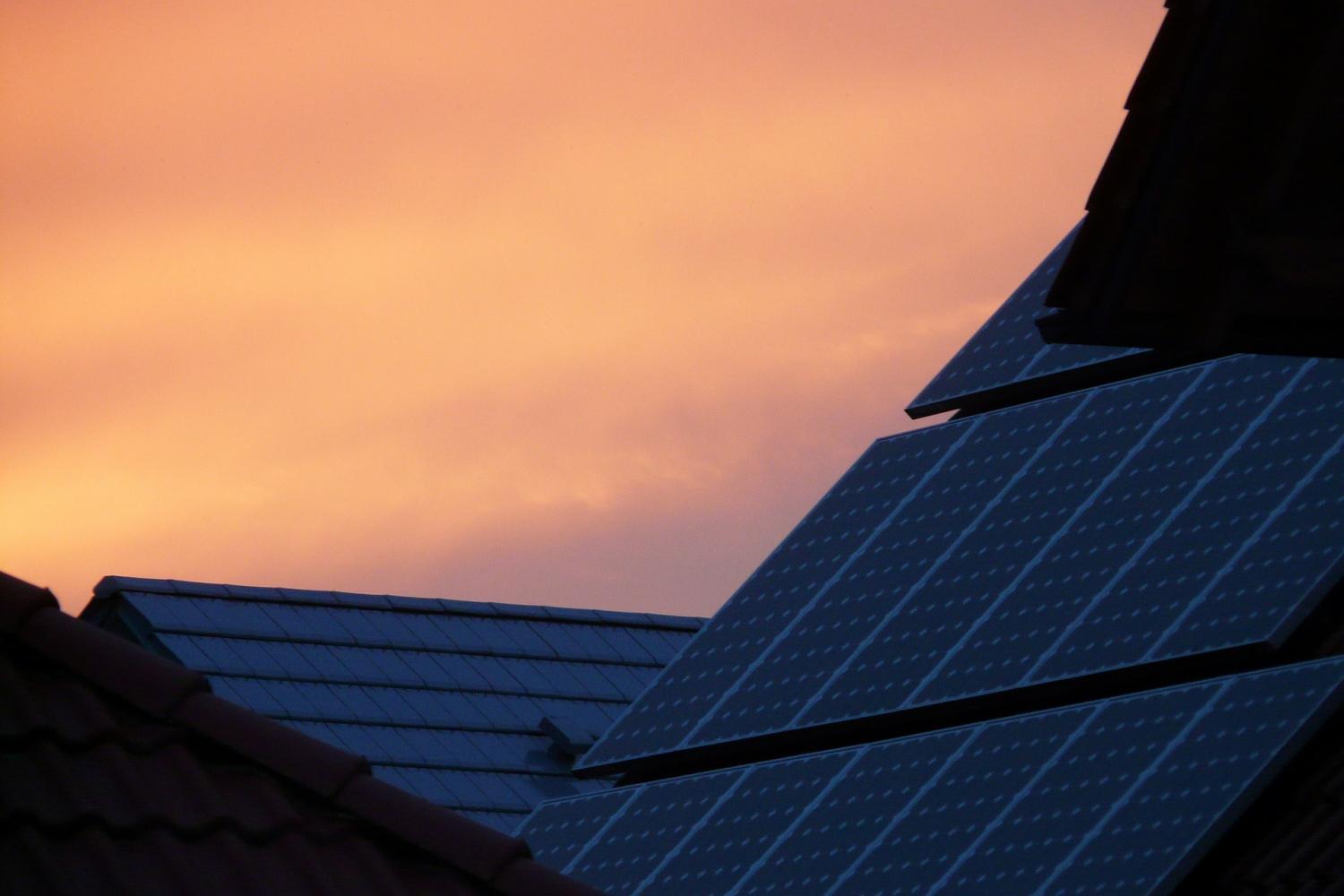
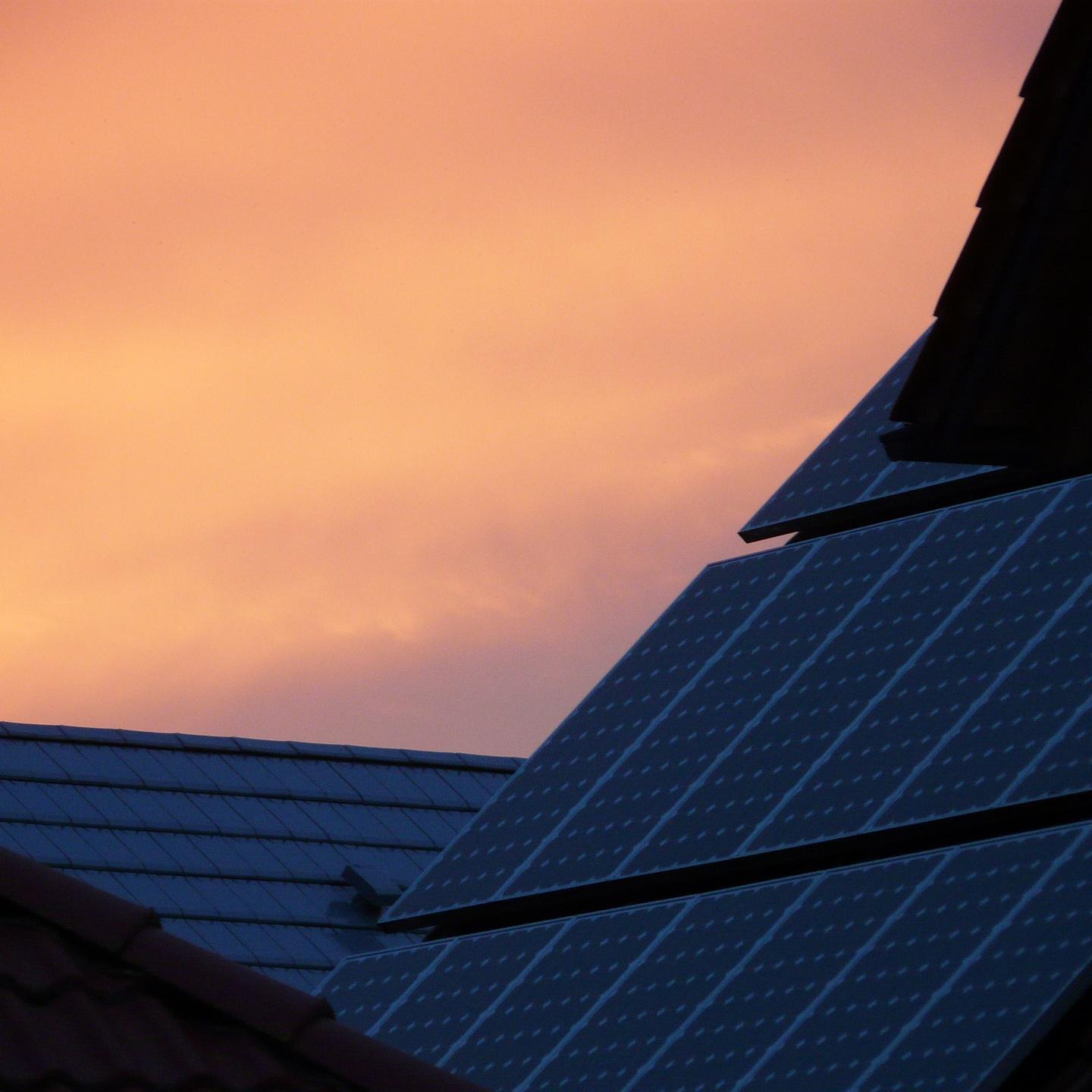
It's often easy to lose sight of any silver linings associated with the COVID-19 pandemic. However, one trend that's worth noting relates to how this global public health crisis could speed the transition to clean, renewable energy.
A new report from Lux Research predicts trillions of dollars from economic relief packages to go into deploying low- and zero-carbon infrastructure. The money could also enable more investigations into and development of the technologies that make such improvements possible.
Mobility reductions help kickstart changes
As the COVID-19 pandemic accelerated around the world, government officials instituted lockdowns and clarified that people should only leave home for essential reasons. With businesses such as cinemas, restaurants, music venues and stores other than supermarkets closed for weeks, residents had few temptations to do anything other than what officials ordered.
Many began working from home, and are still doing that now, even with businesses reopening. Companies announced that people could work from home indefinitely or said they would not have to return to offices until at least 2021. Reduced traffic on the roads led to meaningful and highly apparent emissions improvements that gave a glimpse into what clean energy choices could accomplish.
Lux Research senior analyst Christopher Robison believes the drastic reduction in mobility was the most noticeable effect of the coronavirus pandemic on modern life. Additionally, this shift could spur future progress.
Robison clarified: "The magnitude of the longer-term impact of COVID-19 on mobility remains unclear as more people work from home and replace work travel with virtual meetings, but the push to reduce and eliminate emissions from the transportation sector has only increased, with many post-COVID stimulus plans focused on low- and zero-emission vehicles."
Countries in Europe are robustly moving forward to encourage people to purchase electric cars as part of the COVID-19 recovery. It's too early to tell how those might pan out in the long run. Nevertheless, anything that urges consumers to purchase electric vehicles rather than those that make substantial contributions to pollution could help some of the improvements seen during lockdowns continue.
Clean energy can bring greater resilience and agility
The coronavirus pandemic also highlighted how some companies and sectors found chances to thrive, while others faced supply chain slowdowns and substantial disruptions to operations. For example, developing trends in healthcare technology gave medical facilities options for seeing patients from their homes through computer monitors and apps. These possibilities helped slow the spread of the coronavirus while positively impacting emissions as people did not need to travel.
Innovations like telehealth platforms meant that people in rural or underserved areas could save themselves from prolonged commutes by logging into secure portals from their living rooms. Medical technology companies showed their resilience and agility during this public health crisis. Other sectors and nations can do that, too, especially by investigating the potential of clean energy.
"The aftermath of COVID-19 will shake the economic fabric of the energy sector," says Yuan-Sheng Yu, a senior analyst at Lux Research. "We witnessed many historical firsts, such as oil futures trading in the negatives, U.S. renewable energy in the electricity mix surpassing coal and the largest year-over-year drop in global CO2 emissions."
The analyst brought up how the conventional energy sector's volatility brings macroeconomic impacts to countries around the world. Nations engaging in post-COVID-19 recoveries can capitalize on the opportunities clean energy provides, thereby enjoying more insulation from undesirable economic effects.
Lux Research analyst Tim Grejtak examined what that could mean from the business side of things. "The pandemic highlighted the risks of disruptions to our current energy infrastructure and supply chain," he said. "In response, we will see aggressive diversification of business portfolios to avoid the risk of underutilized and, eventually, stranded assets in order to capitalize on opportunities provided by increasing renewable energies."
Declining clean energy costs can lead to future investments
The current strains exacted by COVID-19 challenged leaders and legislators to figure out how and where to invest time, attention, and funds to help nations bounce back. The good news about renewable energy is that installation costs have dropped tremendously. One report mentioned an 83 percent drop in electricity costs from new solar energy plants in 2019 compared to a decade earlier.
Other research indicates that wind power projects cost 40 percent less to install in 2018 than in 2009 and 2010. It also showed that wind turbines have gotten bigger, and that trend will likely continue. Larger turbines can boost performance and overall output, making them especially favorable for those who invest in and build them.
Governments and business decision-makers want to feel confident that their recovery efforts will pay off. Embracing renewables brings benefits spanning far beyond helping the economy stabilize after COVID-19. That's one of the many reasons it makes sense to include clean energy in current or forthcoming economic stimulus packages.
Looking toward a brighter future
The COVID-19 lockdowns showed that environmental progress can happen within a relatively short time. One issue that is emerging now is that some people may lose sight of that reality and take their focus off initiatives to help the planet.
Concerned individuals must continue to remember what's possible and put pressure on those in power to ensure the clean energy momentum continues rather than fizzles out. The input provided here shows that's well worth the effort.
Image credit: Hans Braxmeier/Pixabay
Black-Owned Businesses Hit Hard by the Pandemic Are in Urgent Need of Aid
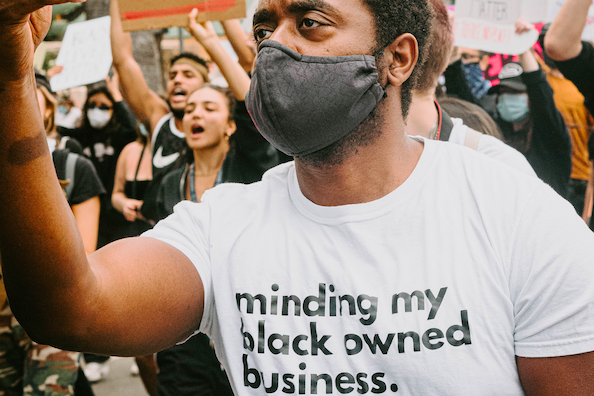
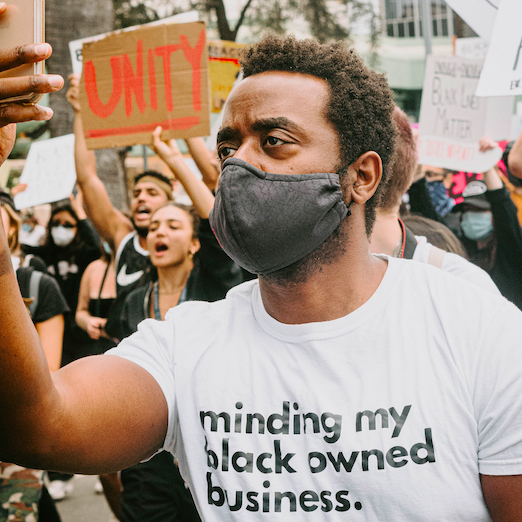
COVID-19 has disrupted life on all fronts, not just in public health. One of the most impactful, lasting consequences of the pandemic is the ongoing recession harming business owners worldwide. Research shows the recession isn't impacting all businesses equally, either. Black-owned businesses are feeling the effects of the COVID-19 recession more dramatically than their white-owned counterparts.
A recent study from the Federal Reserve Bank of New York found that Black-owned businesses declined by 41 percent between February and April. By contrast, white-owned enterprises fell by only 17 percent, according to the same report.
Black businesses tend to be more geographically concentrated than others, often appearing in larger urban centers. These areas also happen to be some of those that have endured the most severe COVID-19 outbreaks. Roughly 63 percent of counties with high concentrations of Black enterprises are in the 50 areas with the highest concentration of COVID-19 cases.
A disparity of resources
These geographic disadvantages aren't the only factor behind the difference in how severely the recession is affecting Black-owned businesses. On average, white-owned businesses had access to more resources to help them through the pandemic. Since many Black-owned enterprises didn't have the same resources, they had a harder time surviving.
Many Black communities are still feeling the effects of past racial injustices. For generations, Black Americans couldn't access the same education, property, or jobs as white Americans because of discriminatory laws and society. Though these prejudices began to fade, Black citizens are still largely at a disadvantage because their families weren't able to build the same levels of resources over time.
Times of crisis tend to highlight the effects of this history of injustice. Many Black-owned businesses were still recovering from the Great Recession of 2008 when the COVID-19 pandemic hit. Since they were still struggling from past hardships, they didn't have the resources to survive the present crisis.
Government aid falls short
The Paycheck Protection Program (PPP) helped many small businesses survive the recession, but it helped fewer Black enterprises. One report found that only 23 percent of Black-owned businesses obtained a bank loan, compared to 46 percent of white-owned small companies. A lack of strong banking relationships led to fewer Black-owned companies receiving PPP loans.
In states with high concentrations of Black businesses, only 20 percent of eligible firms received a PPP loan. That figure was typically lower for counties with higher rates of Black-owned business activity. Without this monetary support, Black-owned enterprises lacked the tools necessary to stay afloat.
A lack of change in other government processes may put further pressure on Black businesses. In New York, for example, the Division of Tax Appeals has not extended its deadline for filing a petition. Recession-hit firms in need of tax assistance may not have had the time to request the help they needed.
How individuals, and companies, can help Black-owned businesses
Amid these hardships, there is still hope for Black-owned enterprises in the pandemic. In the wake of nationwide protests over racial inequality, several large corporations are donating to funds that are supporting Black-owned businesses as well as racial justice organizations. There are also steps that anyone can take to help these struggling companies.
Supporting these businesses by buying from them is one straightforward and effective step. Instead of purchasing goods or services from multinational corporations, people may consider getting these things from smaller, Black-owned businesses. Supporting movements and legislation that addresses their needs is another important way to help.
Recognizing the barriers that these businesses and their owners face is another step in the right direction. Society will have to address the underlying causes of this inequality to prevent future crises. Learning about these issues, bringing attention to them and supporting improved legislation are crucial for moving forward.
The pandemic affects far more than individuals’ health
The effects of the COVID-19 pandemic have reached far past matters of health alone. Just as the recession has been hard on individuals, it continues to threaten businesses, especially Black-owned companies that don't have the same resources. A broader cultural shift can help these companies and future ones survive, but action is necessary.
Sign up for the weekly Brands Taking Stands newsletter, which arrives in your inbox every Wednesday.
Image credit: Fred Kearny/Unsplash
U.S. Business Leaders Defend Voting Rights


The 2018 midterm elections saw a tsunami of support for Democratic candidates, and an organization called Business for America (BFA) is determined to repeat the performance in 2020 — only not necessarily for Democrats, as the case may be. The coalition’s get-out-the-vote effort is a strictly nonpartisan approach to the democratic process. BFA has made a solid, bottom line case for corporate leaders to step up and ensure that their employees can exercise their voting rights and participate in the General Election on November 3, including voting by mail, regardless of their political affiliation.
More U.S. businesses sign up for get-out-the-vote effort
Business for America CEO and founder Sarah Bonk comes to the nonpartisan get-out-the-vote effort with a background in corporate strategy and communications for Apple and other Fortune 500 companies, in addition to pro bono work in the field of nonpartisan political reform.
BFA reflects Bonk’s focus on democracy as a nonpartisan affair. The BFA coalition is “dedicated exclusively to mobilizing the business community to help advance popular, bipartisan political reforms and technology solutions that strengthen representative democracy.”
BFA also coordinates with the Time to Vote campaign, which launched ahead of the 2018 election cycle.
Time to Vote mustered approximately 400 companies representing 2 million workers in a get-out-the-vote effort for the 2018 elections. The campaign focused on urging employers to provide paid time off for voting.
For 2020, BFA and Time to Vote already have 600 corporate supporters toward a goal of 1,000 participants.
Best Buy, Dick’s Sporting Goods, Farmers Insurance, Gap Inc., Glossier Inc., Hewlett Packard Enterprise, JPMorgan Chase & Co., Kaiser Permanente, Levi Strauss & Co., Lyft, PayPal, Patagonia, REI Co-op, Target, VF Corporation, Walmart and Warby Parker are among many other leading employers that have already signed on to Time to Vote.
The business case for defending voting rights
In a joint op-ed for CNN earlier this week, Bonk made the business case for Time to Vote with Warby Parker co-founders Neil Blumenthal and Dave Gilboa.
They argue that nonpartisan get-out-the-vote activities are part and parcel of the corporate social responsibility movement, which has proven to provide businesses with a strong platform for growth in the 21st century.
“It's our duty as members of the business community to take action to safeguard the democratic process,” they write. “This basic level of civic engagement is also expected by our employees and consumers."
From that premise, they argue that employers have a specific duty to ensure civic participation by their employees, just as they have a duty to ensure health, safety, and other foundational needs.
Bonk, Gilboa and Blumenthal also call out business leaders individually by reminding them that their success is a direct consequence of the American civic infrastructure.
“We have a responsibility to preserve the system of democratic governance that allowed us to dream big and start our own enterprises in this country,” they argue. “A stable democracy benefits employees, customers, business and society.”
So, what can businesses leaders do?
As for the upcoming General Election, Bonk, Gilboa and Blumenthal take note of the COVID-19 crisis. They argue that business leaders have a civic duty to step in where national policy has failed to provide states with the resources need to ensure voting rights
Noting a recent Pew Research poll, two-thirds of Americans were expecting that the pandemic would disrupt the presidential election, adding, “Too many states are under-resourced to hold safe elections under current circumstances.”
Bonk, Gilboa and Blumenthal outline three general actions that employers can take to help ensure that their employees can participate, starting with providing time off — and paid time off at that — to vote, and to participate as poll workers.
The guidance also includes providing employees with information on local polling locations and additional localized voter information.
Encouraging employees to register to vote is the third action step. Warby Parker has adopted a particularly strong approach by incorporating voter registration into its onboarding process.
Bonk, Gilboa and Blumenthal also specifically exhort business leaders to respond to the COVID-19 crisis by providing direct support in the form of protective equipment, poll workers, and additional resources. To cite one leading example, the Los Angeles Dodgers and one of the team’s star players, David Price, have teamed up with LeBron James’s More than a Vote campaign to make Dodger Stadium a polling site that provides for more social distance than typical polling places.
Finally, the op-ed encourages business leaders to join the get-out-the-vote advocacy effort, by signing on to a BFA business letter to congress, and by joining Time to Vote.
Does it make a difference?
The big question is whether or not business leaders can make a difference in voter participation, and the proof may be in the pudding.
Credit for the massive Democratic wave of 2018 lies in many hands, but shortly after the results rolled in CNBC reported a consensus opinion that “demographic change, Democratic mobilization and disaffection with President Donald Trump” were the three main factors.
The 2018 sea change took place during a time of economic prosperity (by some measurements). Today, with the COVID-19 crisis spiraling out of control and a fresh scandal erupting over interference with the U.S. Mail, the disaffection and motivation factors are all but certain to outperform its role.
Bonk, Gilboa, and Blumenthal also take note of the demographic factors.
To be clear, they note that the problem of voter participation transcends race and ethnicity, with “many unnecessary barriers that prevent eligible citizens from fully participating in our democratic process.”
They also warn that the 2020 primary elections saw “fewer open locations and poll worker shortages resulted in overcrowded, unsafe conditions and long lines to vote."
However, they also highlight the racial and ethnic disparities that get in the way of voting rights.
“Black and Hispanic Americans were more likely than White Americans to face challenges getting the time off from work to vote. And other barriers to voting — such as voter identification requirements and voter registration restrictions — continue to disproportionately impact communities of color,” they write.
All else being equal, increased voter turnout in communities of color would benefit all candidates regardless of their political affiliation.
Nevertheless, voter preferences have clearly broken down along race and ethnic lines, with no sign of repair in sight.
If BFA and Time to Vote helped to make a difference in the 2018 election cycle, it will be interesting to see how the campaign’s growing corporate support for voting rights pans out on November 3, 2020.
After all, as Bonk, Gilboa and Blumenthal point out, “informed, engaged citizens and employees are good for business and our country.”
Sign up for the weekly Brands Taking Stands newsletter, which arrives in your inbox every Wednesday.
Image credit: Element5 Digital/Pexels
How This Tech Company's Pre-IPO Equity Pledge Helped It Align with Black Lives Matter
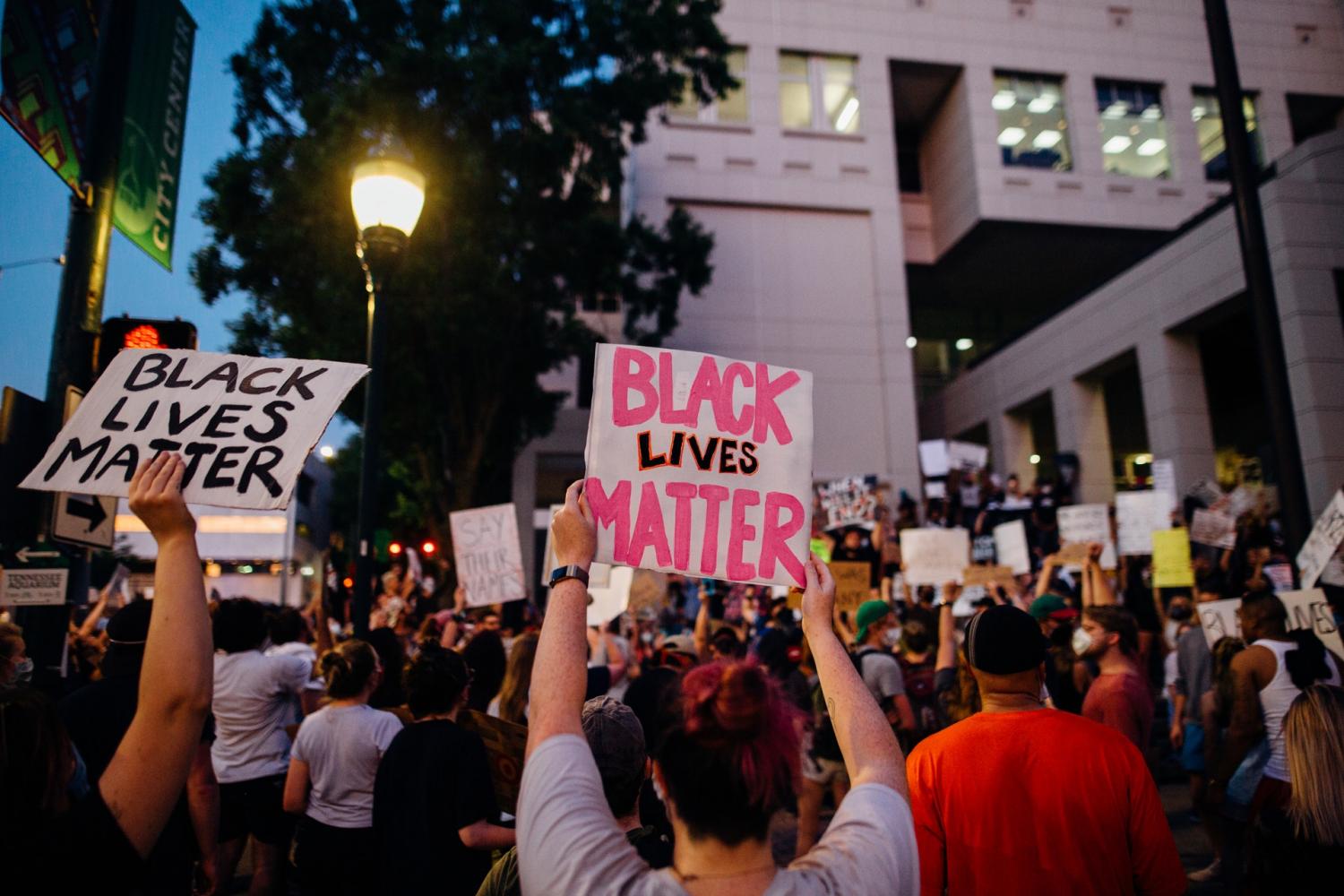
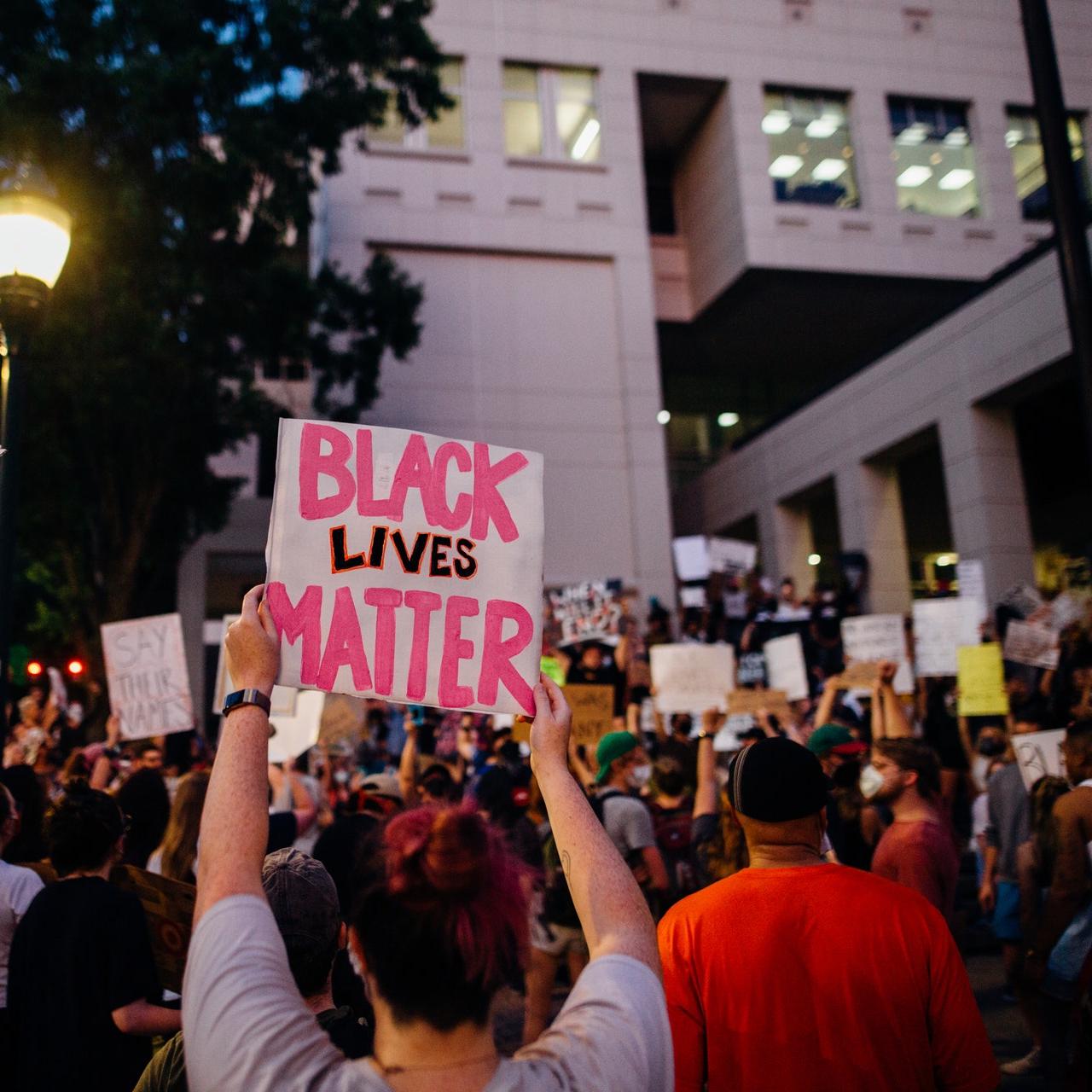
In the nearly three months since the murder of George Floyd, there’s been no shortage of companies proclaiming allyship with the Black Lives Matter movement. But many Black employees are justifiably leery about their company’s public statements insisting they “stand” with people of color.
This tech company was quick to align with Black Lives Matter
One company that says it is stepping up to meet the moment is Okta, a cloud computing firm based in San Francisco. The 11-year-old company, which boasts a market cap of approximately $25 billion, announced earlier this summer that it would commit $1 million in funds to take on racial equity; its co-founders, Todd McKinnon and Frederic Kerrest have pledged another $2 million toward this effort. McKinnon and Kerrest also said they would match employees’ donations to a fund focused on racial justice, essentially tripling any employee’s contribution.
For Okta, this support of the Black Lives Matter movement is business as usual. “Our strategy is always to listen first to our employees and partners, then empower employees to guide our response,” said Erin Baudo Felter, the company’s vice president of social impact. “The end result is that we’re not just ‘responding.’ We’re building the muscle inside our organization to be able to take on issues like racial justice and inequality longer-term.”
Match your deeds to your words . . . and checks
Such an approach is far more beneficial than merely putting out a press release, modifying a logo and then simply writing a check to respond to the Black Lives Matter movement, which to date has been the standard M.O. for U.S. companies. On this an other social justice challenges, Okta says it’s ensured employees would have a voice, too. Says Felter: “At Okta, we’re doing more than giving money away to organizations in need. Our executive team has had exposure to the issues in our communities that we support. They play a critical role in our commitment to social impact and embed these efforts into their teams.”
In addition to the financial commitment, Okta is also partnering with the Tides Foundation. The 44-year-old nonprofit is providing the company’s employees with training and workshops so they can gain more knowledge about the Black Lives Matter movement and attain the skills critical so they can decide on grant-making recommendations.
“There is a clear understanding at Okta that social impact is not only core to building a successful company and one where people want to work, but also that this is the kind of role companies increasingly must play in society: that we are interconnected to the communities around us,” Felter added.
In addition to Okta’s promise to support and fund the Black Lives Matter movement, the company also runs the Okta for Good initiative, which offers free or discounted licenses for its suite of products to nonprofits.
How the 1% Pledge can help boost the Black Lives Matter movement
Okta is a Pledge 1% company, a global movement that encourages global companies of any size to donate 1 percent of their equity, time, product or profit — or any combination of the four — to charitable causes. The company’s early pledge to donate equity has certainly paid off for its partner nonprofits and future grantees since Okta went public in 2017.
“You can read our S-1 and see 300,000 shares were set aside to support Okta for Good,” Felter told TriplePundit as she highlighted the company’s early commitment to donate a portion of its equity. “At IPO, the value of that equity was about $5 million in total. Because our stock has performed so well over the past three years, that same equity is valued at about $60 million today. This is the power of pre-IPO equity commitments.”
Okta’s approach toward aligning with the Black Lives Movement exemplifies how the company addresses social impact initiatives across the organization. But it helps that any company’s founders embrace support for social justice early on. Felter made it clear that, as the saying goes, this commitment is in the company’s DNA and was not a knee-jerk reaction to rally behind the latest cause. “One thing that’s different at Okta, and that has allowed our social impact programs to thrive, is that there was a very early commitment at the highest level with our co-founders and the board of directors,” she said.
Bottom line: Okta's existing engagement with employees around its 1 percent pledge placed the company in a strong position to turn to employees for input on Black Lives Matter donations.
Social impact matters more than ever to employees
For companies seeking to inspire and motivate their employees in the era of COVID-19, nothing has really changed, even if a company’s employees are still working remotely. At a time when many employees are stuck at home and cannot help but be glued to the television or laptop monitor, the stubborn fact persists that people are aware of what’s going on and most likely have strong opinions about how their companies should react. No one wants to work for a company issuing statements supporting Black Lives Matter, or any social cause for that matter, just because the C-suite feels there’s a reputation to defend or, even worse, that there’s a profit to be made.
Okta has made it clear that the company is listening – and was doing so before social justice protests flared up across the U.S. “The conversations with business leaders today are not the same as they were several years ago. Now, there’s an assumption that social impact is a core part of every company,” Felter says.
Sign up for the weekly Brands Taking Stands newsletter, which arrives in your inbox every Wednesday.
Image credit: Kelly Lacy/Pexels
Before Proclaiming Words on Black Lives Matter, Be Sure the Deeds Are Covered
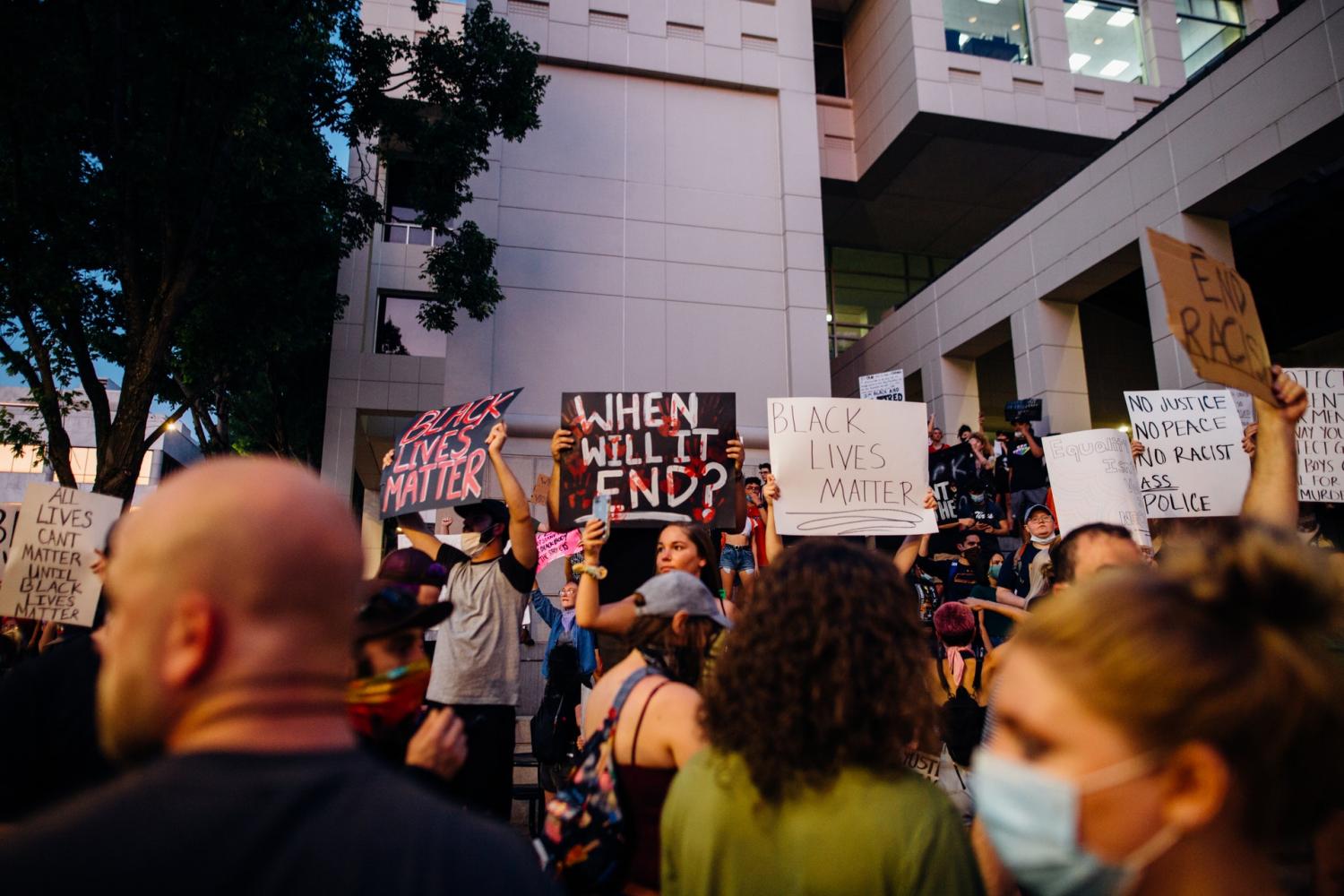
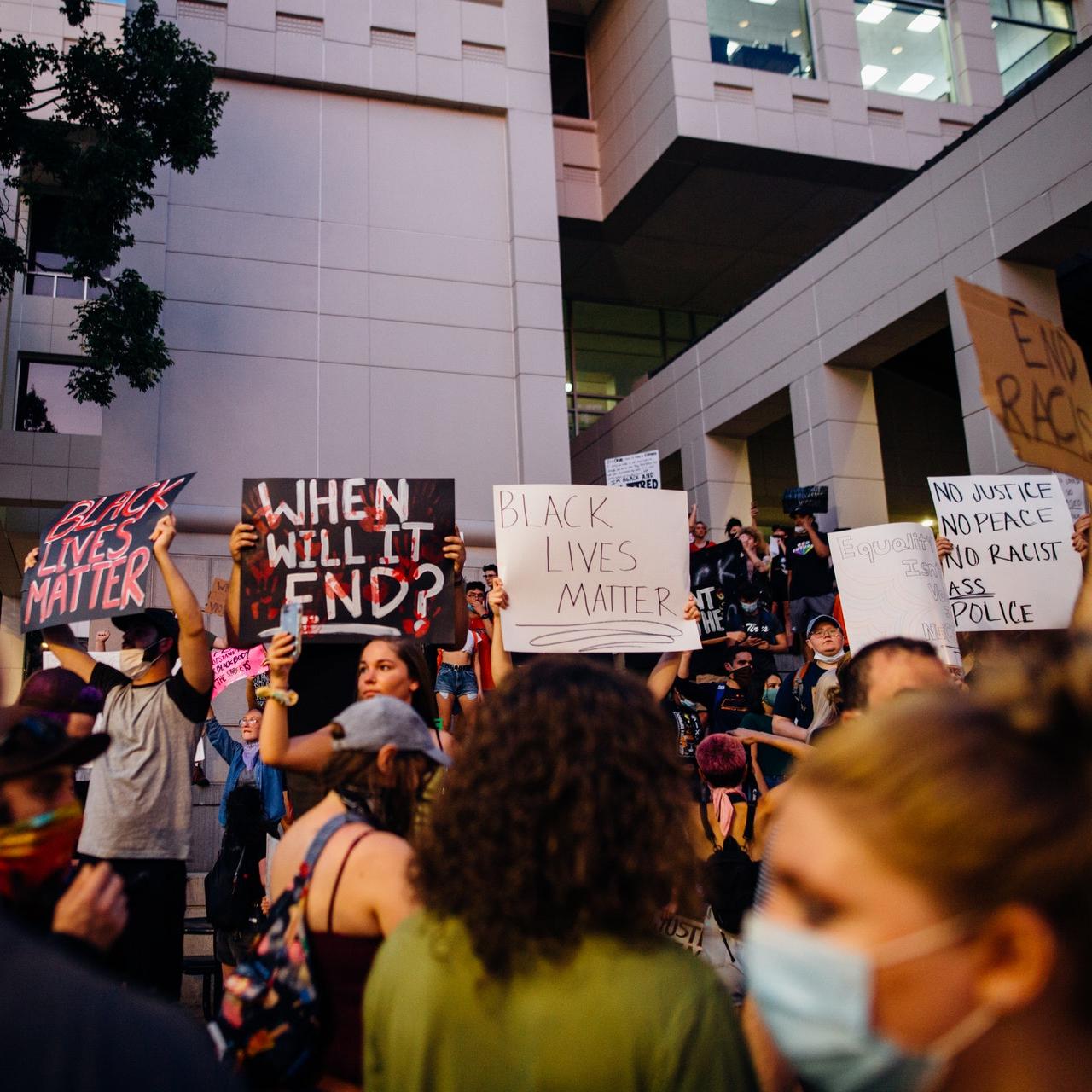
As companies stepped over each other this summer to show allyship with the Black Lives Matter movement, one company in the personal care sector stood out. Only a few years ago, Glossier disrupted the cosmetic and personal care industry with its customer-focused approach and the harnessing of crowdsourcing tactics to develop new products. In an industry that often takes a top-down approach directing how and when women should use makeup, Glossier turned the model on its head, and fans say it “democratized” cosmetics. Its flagship store in New York, followed by one in Los Angeles and then several pop-up stores, became consumer favorites.
Glossier took fast action as protests over the murder of George Floyd flared up and then grew stronger across the U.S. A $1 million donation to the Black Lives Matter movement and Black-owned beauty brands hit the newswires while many Americans were still learning about the circumstances surrounding Floyd's death at the hands of Minneapolis police.
But then Black employees started to speak out on their experience working at Glossier, and any sheen the company had about its support for progressive causes began to wear off.
An exclusive in Fortune detailed an incident earlier this year at its New York store, during which some teens used the company's products to paint on blackface. The story rapidly accelerated from an awkward moment to an episode that store management allegedly wanted swept under the rug, with Black employees saying their concerns were ignored. Shortly after Glossier announced company-wide layoffs of its retail workforce, at least 50 former employees ripped off the Band-Aid, describing offensive experiences they endured at work, pointing out management's alleged inaction, and calling on the company to take accountability.
For people of color, reading about what happened at Glossier wasn’t all that different from what has been the norm in offices across the U.S.: constant microagressions, comments about one’s skin color or appearance, making Black employees clearly feel as “others,” and allowing white customers to treat Black and Brown employees shabbily.
As complaints intensified last month, the company’s founder and CEO, Emily Weiss, quickly responded with what critics said were vague promises, such as “we need to create better feedback loops between our retail and corporate teams.” But a group of former Glossier employees, who named themselves “Outta The Gloss,” wasn’t having it.
The group of former employees criticized Weiss and Glossier for a lack of transparency, its alleged burying of recent layoff announcements and vague promises about internal changes within the company. Glossier has since publicly apologized and pledged bolder action, to which the group of employees essentially replied, "Show us the receipts."
The problems Glossier is now facing are fairly textbook. They include weak or ignored human resources policies, a work culture marred by a fear of speaking out, and white employees and managers dismissing any concerns shared by colleagues who happen to be people of color.
Highlighting the struggles Glossier is now facing is not about looking in the rearview mirror. For other companies, it’s not too late. There’s still time to update the human resources handbook, to enact policies that can prevent a toxic workplace, and retrain, inform and remind employees about how to treat all colleagues with dignity.
But before any company makes public promises, changes its logo, or writes a check to Black Lives Matter or any cause for that matter, real change has to happen within. Companies should check in with their Black colleagues, acknowledge their challenges, and fix what’s broken.
Glossier isn’t the first company to get it backwards and won’t be the last. But the $1.2 billion cosmetics upstart does offer a timely lesson about how to work toward racial equity — and why it’s important to address problems in the workplace internally before they are aired publicly.
Sign up for the weekly Brands Taking Stands newsletter, which arrives in your inbox every Wednesday.
Image credit: Kelly Lacy/Pexels
Women Are Being Left Out of Solutions for the Global Hunger Crisis at a Huge Cost to Society


Photo: The pandemic has exacerbated the global hunger crisis, but women can be key to fighting back if they are included in the response. In Ghana, so-called “market queens” play a prominent role in managing large markets, which is why they approached the government to come up with actionable solutions to keep markets open safely during the pandemic.
The pivotal role women have in agriculture and the food system is often invisible, which comes at a huge cost to society. A new report from the humanitarian agency Care International reveals how the global community is failing to solve the mounting hunger crisis by ignoring the role of women and girls — and why this important market force and consumer group is the key to solving hunger and securing a sustainable food system.
Care's study analyzed 73 global reports proposing solutions for the international hunger crisis from the most powerful actors in the food system, such as U.N. agencies, governments and research institutions. Nearly half of the reports don’t refer to women and girls at all. None of the reports consistently analyze or reflect the gendered effects of the pandemic and hunger crises. Only 5 reports — less than 7 percent — propose concrete actions to resolve the gender inequalities crippling food systems. The rest overlook or ignore women and girls.
“Fundamentally, it comes back to the challenge of gender inequality and the fact that women are not seen and recognized as key and critical players in food systems; they aren't seen as the leaders that they are," the report’s author, Tonya Rawe, director of global food and nutrition security advocacy at Care, told TriplePundit. "Because they’re not thought about, they're forgotten and left behind. And that is ultimately the issue that we're seeing in our analysis.”
COVID-19 makes the global hunger crisis even worse
The COVID-19 pandemic is exposing the existing flaws in food systems, many of which stem from gender inequalities and the unfair treatment of women and girls, Rawe said. Women and girls are the majority of food producers and food providers for their households, but their contributions are frequently unseen. Too often, women eat last and least. Further, women lack the access, information, and inputs they need to fight food insecurity and malnutrition.
This is happening against a backdrop of the ever-worsening global hunger crisis. As Care notes, at the start of 2020, 690 million people were undernourished or chronically hungry, and U.N. agencies estimate that figure could increase by over 130 million because of COVID-19. Severe food insecurity or a food crisis could nearly double to affect 270 million people by the end of this year.
Rising hunger and food shortages are also putting additional burdens on women, from mental health risks to gender-based violence. Whether intentionally or by omission, global responses to COVID-19 and related hunger crises are either ignoring women and girls or treating them as victims who have no role in addressing the problems they face.
The invisible role of women has dire impacts on the ground
Rawe cites a number of examples featured in the report. Prior to the warehouse explosion in Beirut that recently destroyed half the city, 85 percent of women Care surveyed in Lebanon were already eating smaller portions, compared to only 75 percent of men. Rawe expects that the latest tragedy has only amplified this illustration of women eating last and least.
In Mali, curfews related to the COVID-19 pandemic restrict the times women work in the fields, but not the hours men work, so women disproportionately struggle with food production. In northeastern Nigeria, women have lost access to the cash-for-work programs that allowed them to buy seeds and grow crops. In Vietnam, women are struggling to buy protein and vegetables to make a balanced diet. In Morocco, women cannot even register for COVID-19 safety net programs unless they are widowed.
For governments, NGOs and the private sector — anyone with a vested interest in a productive and resilient food and agricultural system — this growing global hunger crisis should be a wake-up call, Rawe said. “Women are half the population and play a major role in food systems," she told us. "Unfortunately, our analysis confirmed what we had initially started seeing in our work — that women are really not part of the discussion to solve the hunger crisis.”
Women farmers face barriers that limit their productivity
Women represent 46 percent of agricultural labor in the developing world, according to the U.N. Food and Agriculture Organization (FAO). Yet much of this work is done without training, key farming inputs, secure land rights, and often little or no pay. This lack of equal access to resources and information means that women produce 20 to 30 percent less than men do on the same amount of land, according to Care.
In the context of the pandemic, these barriers can play out with severe impacts on hunger. Women in Mali who can’t get to their fields because of a curfew struggle to feed their families. Access to government safety net programs in Morocco, or even in wealthier countries like the U.S., can “ensure a family doesn’t fall further when it hits a spot of trouble,” Rawe points out.
Becoming part of the solution: Ghana’s market queens
Care found evidence, however, that women leaders at all levels are finding solutions: from planting crops during curfew, to keeping markets open, to supporting the poorest people in their communities.

In Ghana, so-called “market queens,” who in large part manage very prominent markets in towns, have taken the initiative to approach the government to ensure they and other vendors can still continue to work safely during the pandemic, both to secure income and feed their families. They worked out a system of rotating vendors to have fewer in the market at any one time, for example, and expanded the physical space for the market so that vendors could be more spread out. The market queens, due to their stature, could enforce these rules.
“This is a great example of women playing a critical role,” Rawe explained. “If they’re engaged, they’re able to bring fantastic ideas to the table and help find solutions that work for both sides.”
A gender-lens approach to food insecurity is a necessity for both the public and private sectors
In its report, Care recommended that governments immediately adopt a gender-responsive approach to the food supply system and solving hunger and increase their investments focused on women and girls in agriculture.
A gender lens is something the private sector should be invested in, too, Rawe added: “Ending hunger and malnutrition is in everyone's interest, and it is going to require all hands on deck. Every sector needs to be stepping up for this challenge. Whether they're producing food or providing it for their households or consuming it, women are a powerful market force.”
As 3p has reported, companies like PepsiCo and Cargill are working together with Care, investing millions of dollars to tackle the issue of gender inequality in agriculture, providing resources and training to women farmers and their families. These firms, and others in the food and agriculture industry, have a vested interest in women being able to improve their productivity to feed a growing world, Rawe noted.
“We had gender inequalities in food systems before COVID, “ she added. “If we aren’t taking the opportunity to address it now, then afterward we’re still going to be in the same place we’ve been for too long.”
Image credits: Care International
How Sustainable Agriculture Emerged as a Huge Investment Opportunity


As the coronavirus pandemic reveals deep vulnerabilities in the global food system, agriculture is increasingly seen as an area ripe for disruption and for transformative investment. Sustainable agriculture could both feed a world of 10 billion by 2050 and provide the next big investment opportunity.
Why sustainable agriculture pays off financially and environmentally
That’s the view of Levi Stewart Zurbrugg, senior investment analyst with Saturna Capital, who analyzed those developments in his report, Feeding 10 Billion People in a Climate-Changing World. Saturna Capital is a Bellingham, Washington-based investment management firm with about $4 billion in assets and 30-year history, managing a number of sustainability-focused funds that screen for environmental, social and governance (ESG) factors.
The report highlights the challenges in securing food supply for the world's growing population while mitigating climate change posed by existing agricultural practices. As Zurbrugg told TriplePundit, “We cannot formulate climate change solutions or expect to reach greenhouse gas emissions targets without a comprehensive overhaul of our current agricultural system.”
Agriculture represents a quarter of global greenhouse gases, while using 50 percent of the world’s vegetated land and 70 percent of its fresh water, so it clearly has to be part of the climate solution, as Zurbrugg sees it. At the same time, agriculture is one of the sectors most vulnerable to the impacts of climate change, from extreme weather to effects on crop yields and exposing livestock to heat stress, water shortages and pests.
“I think investors and companies are waking up to these issues. There are clear risks that are becoming ever more apparent within the agricultural supply chain," Zurbrugg told 3p. "Farmers have always known that they are at the mercy of the weather, but with increasingly extreme weather events happening, there is more pressure to adapt to these changes and mitigate further increases."
Farmers can have a leading role in building resilience
Recognizing what is at stake, the Foundation for Food and Agriculture Research and U.S. Farmers and Ranchers in Action (USFRA) announced in February an agriculture-climate partnership to unlock the climate-solving potential in farmlands through sustainable agriculture practices, with the goal for agriculture to be net negative for greenhouse gas emissions by 2030.
“We need to invest in [resilience],” says Erin Fitzgerald, CEO of USFRA. “We need new forms of capital entering the food supply chain focused on the long term, and by that I mean, long-term contracts, risk mitigation tools [and] different types of insurance. And the agriculture sector also needs to take advantage of ESG investing, institutional investing and bonds, an investment in the future that could help our farmers have more resilient and adaptive farms. We need transformative investment for a net-zero economy and rural revitalization.”
Four key areas for action
According to the report from Saturna, the solution lies in four main areas in Zurbrugg’s estimation: decreasing food loss and waste, changing animal protein consumption patterns, reducing methane from livestock, and increasing crop yields.
Globally, food loss and waste amounts to approximately $1 trillion in economic losses. In the U.S., some 40 percent of food is lost or wasted — and 30 percent globally. “I think this is an area where we could see more of those start-up companies that really disrupt in the same way that Uber and Lyft have disrupted taxi services,” Zurbrugg says. “But it is also one of those areas where there needs to be greater public-private partnerships to create the infrastructure to both tackle the waste and inform consumers.”
Approximately 15 percent of all human activity-related GHG emissions are associated with animal agriculture. Added Zurbrugg, “Such growth is not sustainable; we must develop alternatives.”
That’s a message that’s been heard loud and clear by alternative meat startups like Impossible Foods and Beyond Meat, along with the investors who back them, as 3p has reported. The global alternative meat industry could be worth $140 billion in 10 years, or roughly 10 percent of the global meat industry, according to analysts at Barclays.
As Zurbrugg notes in his report: “The coronavirus pandemic has exposed meat supply chains as among the most vulnerable to food system shocks. Going forward, supply is likely to be an added driver to the growth of alternative proteins.”
Recognizing supply-related shocks as risks to the food system, the Chinese government has established an initiative to reduce meat consumption by half across the country. Considering the country accounts for close to 30 percent of global meat consumption, Zurbrugg points to this as a significant opportunity for animal protein alternatives.
Another way to tackle the challenge is to reduce methane from livestock. As the Saturna report notes, feed additives can reduce emissions associated with enteric fermentation. One study found that adding a particular type of seaweed can reduce methane emissions by up to 80 percent.
When it comes to increasing crop yields, Zurbrugg notes: “If we held current production efficiencies constant through 2050, most of the world’s remaining forests would need to be converted into agricultural land. Converting forests into cropland alone would likely lead to climate disaster.”
Instead, he points to advancements in sustainable agriculture like improved soil and water management, adaptive crop genetics, and intensified production on existing cropland.
New technologies can boost sustainable agriculture
Fortunately, he adds, there’s been enormous progress in new technologies and techniques to make sustainable agriculture more efficient. This includes advanced chemical and biological agriculture technologies such as pesticides with reduced toxicity, seed treatments that allow for reductions in pesticide and fertilizer use, and enzymes that allow livestock to more efficiently absorb nutrients.
Adaptive genetics present another avenue in meeting global food demands amidst a rapidly changing climate. The agricultural biotech market (largely comprised of genetically modified crops) in 2017 represented $20 billion in sales. By 2026, it could grow to $52 billion, an 11 percent compound annual growth rate.
Finally, precision agriculture technologies are ripe for investment. There’s a $20 billion revenue opportunity in agricultural data and analytics, the most active mergers and acquisitions area in the agricultural industry. The technology includes both agricultural management software and efficiency-enhancing hardware, such as drip irrigation, variable rate nutrient applicators and soil sensors.
These technologies help to optimize fertilizer application, improve irrigation efficiency, and identify and treat weather stressed crops, the Saturna report notes. “Such applications not only help farmers maintain and improve crop yields in a climate changed world, but also help reduce agriculture’s contribution to climate change,” Zurbrugg says.
With so much innovation available to tackle the problem and a rapidly warming climate, Zurbrugg thinks there is no excuse to delay action in boosting sustainable agriculture worldwide. “The coronavirus has shown us how these shocks can really impact our food supply chain. Over the coming decades, climate change is going to be yet another, bigger shock to our food supply systems. So, it’s really important to assess how we can build a better and more resilient food supply chain in the face of these challenges.”
Image credit: Larisa Koshkina/Pixabay